By Rob Feld
 How to end Six Feet Under, which delved deeply and intimately into the lives of a family of morticians and their loved ones for five seasons from 2001 to 2005, presented a challenge for series creator Alan Ball. The solution, seemingly inevitable and obvious, presented itself in the writers’ room one day when somebody jokingly said they should just kill everyone off.
How to end Six Feet Under, which delved deeply and intimately into the lives of a family of morticians and their loved ones for five seasons from 2001 to 2005, presented a challenge for series creator Alan Ball. The solution, seemingly inevitable and obvious, presented itself in the writers’ room one day when somebody jokingly said they should just kill everyone off.
Ball, who directed six episodes, including the pilot and finale, realized that going forward in time to be with the characters when they die was a perfect way to conclude the show. The final sequence starts with Claire (Lauren Ambrose), the youngest sibling of the Fisher clan, as she sets out for a new job and a new life in New York. “When the show started, Nate was our way into this world, and Claire became our way out of it,” says Ball.
PHOTOS: David Chase on The Sopranos Final Shot
Once Claire says her goodbyes and starts driving out of Los Angeles and through the desert, Ball cuts between her emotional state in the car and moments in the near and distant future: birthdays, weddings, and, eventually, death. And there’s an upward drift of the camera that plays throughout the sequence as it continues, a feeling of floating up, of rising.
“I didn’t want to just go from one death to another to another,” Ball says. “I felt that Claire leaving home presented one of those big life transitions that feels like a little death. So I decided to build the sequence around her driving off to her new life, into the unknown, because that’s what death is anyway.”

Ever since the pilot, I had used the vantage point of looking down the road as a symbol of life, so I decided to use a lot of that in the finale as well. Claire is very young, just 20 or so. What was important to me was that it was very emotional for her to leave but she knows she has to. When I left home, I knew I was never coming back and I cried in the car. So I wanted to see on her face how upsetting that is to really leave everything you know behind. At the same time, I wanted to see her hands on the wheel because she’s the one driving—it’s her choice to leave—but I don’t think you have to sledgehammer those things with a close-up on hands or anything.

I think we shot [Claire’s brother] Nate [Peter Krause] running separately, then shot Claire’s POV of the mirror but covered it in green screen, so we could really control the rate at which he disappeared. In the show, Nate had just died a month or so ago and she realizes she’s leaving him behind, too, and that’s when she really starts to cry. I wanted Claire’s driving scenes to look natural, not contrived or designed, which would contrast with the hazy look of the scenes from the future coming up. It was scripted for her to cry after she sees Nate in the mirror, but it was completely genuine when Lauren did it. It was very emotional for all of us when we were doing those final few episodes.
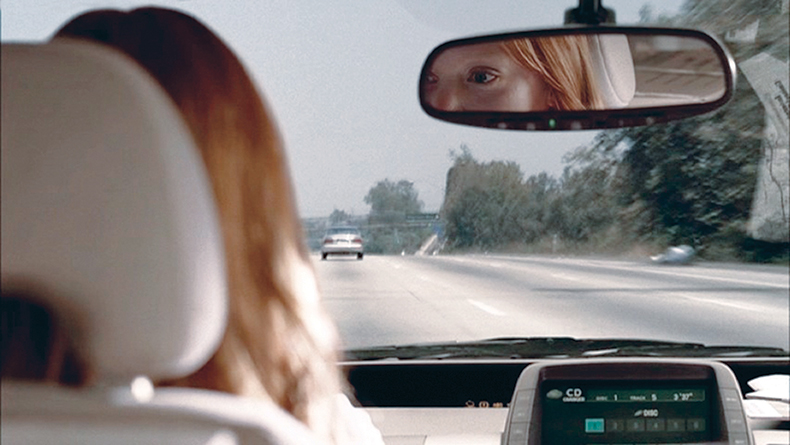
We shot this on a soundstage; Claire’s car is in front of a green screen, because this is where you start to see things outside the car speeding up as she’s driving, which would have been hard to do otherwise. It’s what happens as we grow older; life seems to go faster. I didn’t center her eyes in the mirror because any time I see a mirror in a movie and the person’s face is perfectly framed with both their eyes, it feels phony and set up. I did want to see a piece of her in the mirror because it was important to link her to the fact that life speeds up. But I didn’t want it to be all perfect. I like the fact that she was watching things speeding up but she herself isn’t.
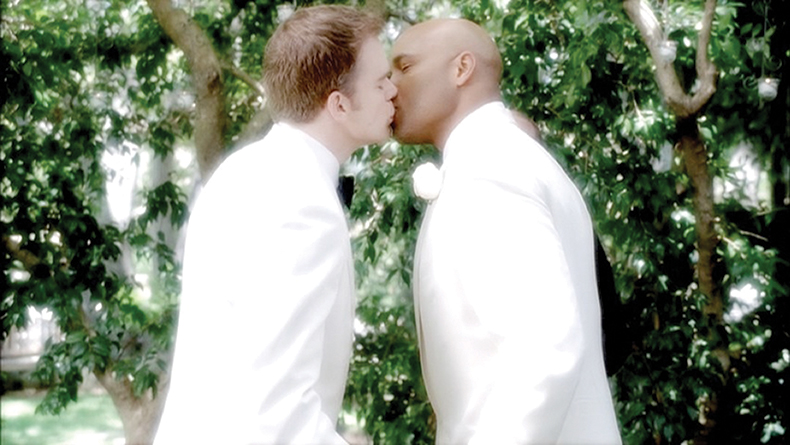
[In the first scene from the future] David (Michael C. Hall) and Keith (Mathew St. Patrick) are getting married. It was not yet legal when I wrote it, but gay couples were having weddings anyway, and I figured a few years in the future, who knows? We were on location and used mostly natural light. Then, in post, we kind of blew it out, as we did with all these glimpses of the future. I love the way that worked on Keith and David’s white tuxes, as if they’re glowing, which feels appropriate. They are out in the world, the sun is shining, this is the big, beautiful day.
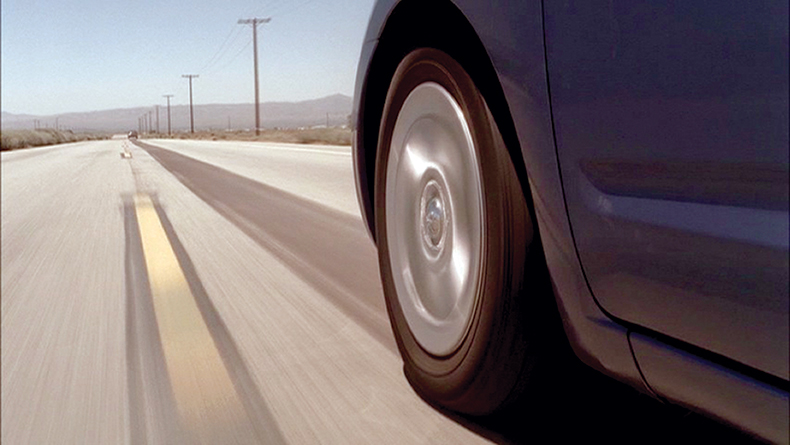
This wheel is a nod to the shot in the title sequence, of the gurney wheel [in the funeral home] pivoting and moving away from us, perfectly timed to Thomas Newman’s beautiful music. I always thought that was such a great shot, the way the gurney swiveled and then we were pushing toward out-of-focus white light. We used a camera rig on Claire’s car and shot somewhere close to Palmdale. I’d like to say this sequence was particularly challenging to edit but editor Michael Ruscio and I had been working together for five years already, so we were pretty much in sync. We had the footage, too; it’s much more difficult to edit when there are shots you need and you don’t have them.
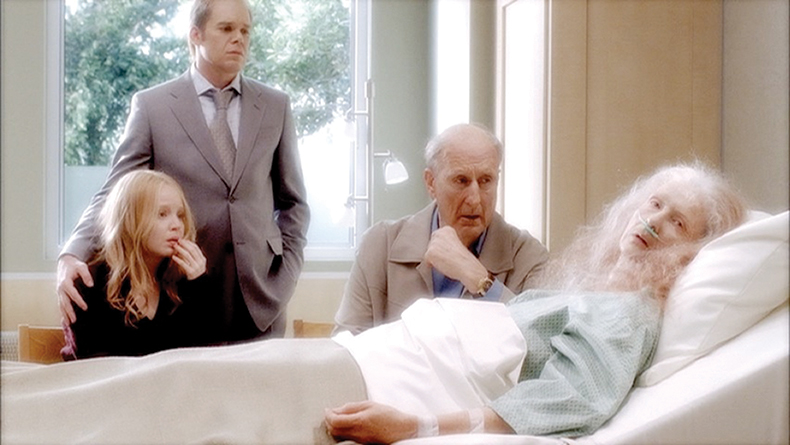
This is the first death of one of our major characters and I was aware that this was going to be the first moment when the audience would realize, Oh my god, they’re all going to die. It made sense that it would be [the mother] Ruth [Frances Conroy], since she was the oldest character. Claire is there and David is there, both visibly older. In talking to hair and makeup, I asked what would be the best way for them to age. We thought David losing his hair and Claire’s hair not being as vibrantly red as it had been before would be good. I wanted everything in these ‘future moments’ to be as believable as possible. Design-wise, we didn’t push the futurism too much. We just tried to get cleaner and more sparse as we went forward.
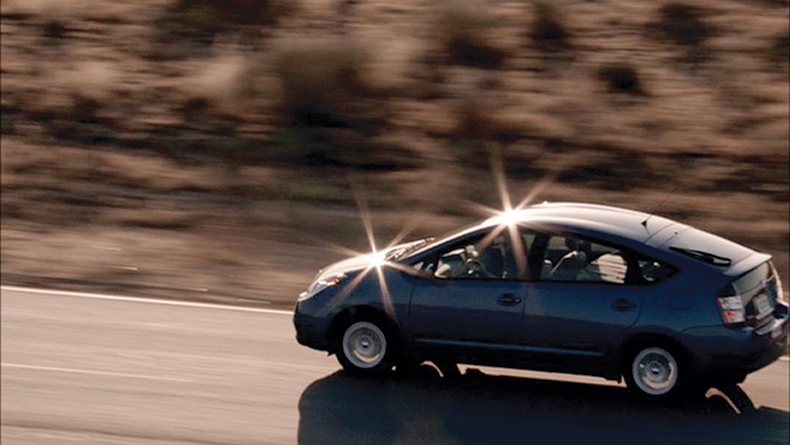
This was my first experience shooting in a helicopter so it was really fun. We didn’t really know what we were going to get; we just hoped for lightning in a bottle. We followed Lauren down the road a lot. It was less about being specific in terms of what we were getting and more about getting as much raw footage as we could so we could find stuff that would work in the edit. I tried to keep the camera always moving once we got into this final sequence. In a way, this is the reverse of the pilot, where everything stops. Claire’s on her journey toward life in a Prius, which I thought was what she would drive. I can’t remember why I chose blue, but I knew I didn’t want to see black, white, or red, and gray felt boring. I think blue just felt right to me.
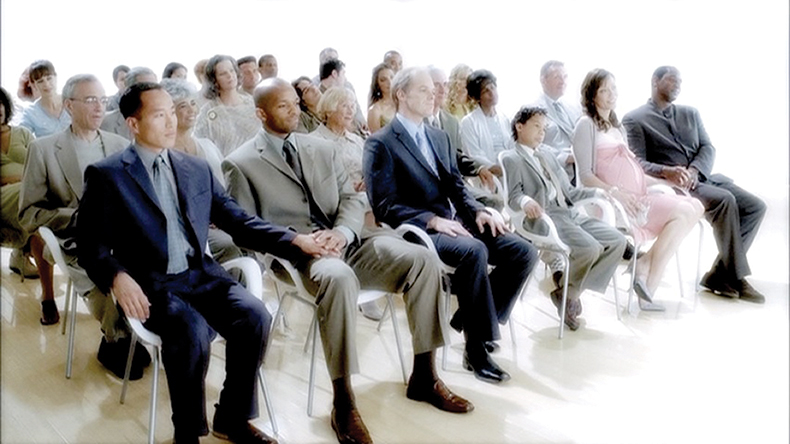
This is at Claire’s wedding. She is at a point in her life now where she and [her old boyfriend] Ted (Chris Messina) can get married. I just like the idea that people who connect younger in life can reconnect later in life. Keith is dead, and now you see David and their two kids who have grown up; life goes on. We shot this in an art gallery, in a stark environment. It’s a moment that is filled with light, which is why I responded to that location when we were scouting. I tried to avoid any sort of futuristic wardrobe. I really liked the high-waisted pants in Her, but that whole movie took place in the future, and I felt like if we did anything so overt with wardrobe in this little montage it would seem silly.
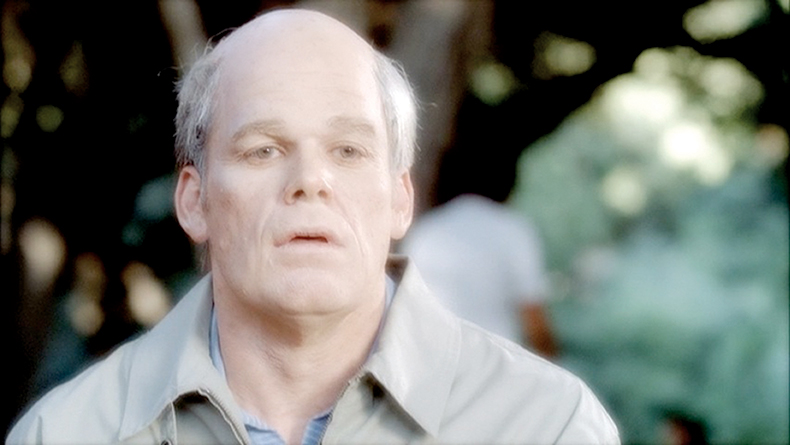
David’s death was kind of a cross between Ruth’s death and Keith’s sudden death. Even though we can tell he’s gotten old and frail, David’s death comes out of nowhere; an aneurysm or heart attack while watching a football game. I love that Keith is the last thing David sees before he dies, playing in the game. Keith was without a doubt the love of his life, even though he had moved on when Keith died. From the beginning, I wanted David and Keith’s relationship to be on an equal footing with Nate and Brenda’s (Rachel Griffiths) and to not be the ‘gay’ relationship. The way Michael played that last moment just broke my heart. All of those moments of the future we see are a little hazy. I told my cinematographer it should be blown out a little bit light-wise.
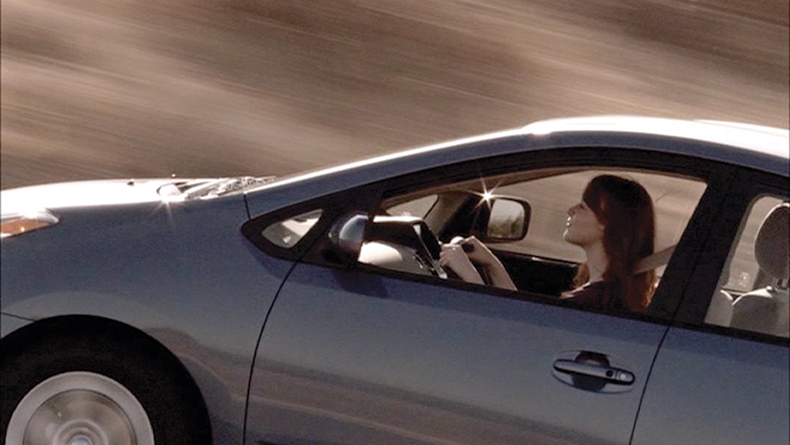
Although some of the driving was done by a precision driver—especially the really far-away stuff—I wanted to make sure that we saw Claire at the wheel as much as possible, as the car moved further and further away from us. The fact the car seems to be ascending within the frame wasn’t planned, but it was perfect with the whole ‘rising’ motif. I was hoping for a feeling of floating up, of rising throughout the sequence. The camera keeps floating upward. It’s one of those metaphors that when you articulate it sounds really stupid, but I wanted to give the sense that we are all floating up from the world of the show; we’re all spirits rising, continually rising.

Lauren was so youthful that to make her look like she was over 100 years old would have been a challenge. So we cast an actress who was elderly and who looked as much like Lauren as possible. I’m sure I saw a Polaroid of the costumes and instinctively chose what she’s wearing, but it wasn’t a conscious choice to put her in flowers to be symbolic. Claire was a photographer, so we decided to go with mostly photography on her wall. I wanted a picture of Ted to be included, because in an earlier scene in bed right before she leaves, she took that picture of him, so I wanted it to feel like a picture from that moment. She’s had a full life. She’s like the old lady in Titanic and she’s ready to go into the unknown. Our DP Rob Sweeney lit these final shots of Claire perfectly.
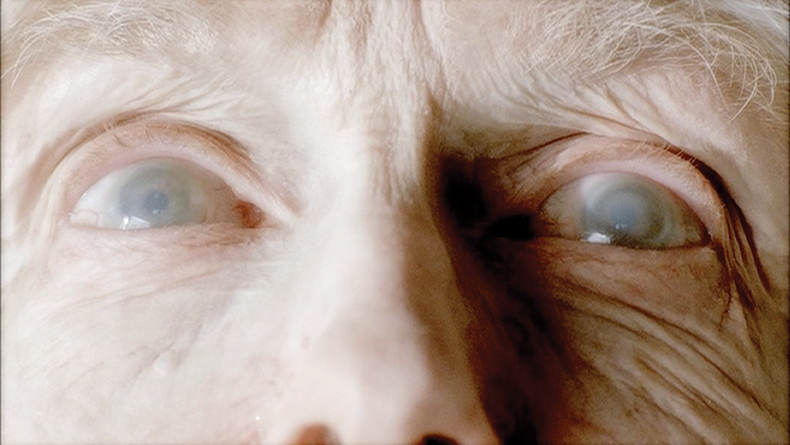
We gave the actress these milky contact lenses to really drive home the age. From here we get [the title card] of Claire’s birth and death dates and then go back to Lauren’s youthful eyes. I wrote it into the script, that we’re close on elderly Claire’s eyes, we cut to the title card, and come back to a match shot of Claire in the present day. I guess the intention was, ‘Yes, we’re all going to die, but right now we’re alive and on the journey.’ Claire, like all of us, is driving into the future. A huge part of what works about this sequence, I think, is the song “Breathe Me,” by Sia. Our music supervisor Gary Calamar brought it to us and we basically storyboarded to it, shot to it, and edited to it. Gary brought us a lot of options, but this one just really jumped out.
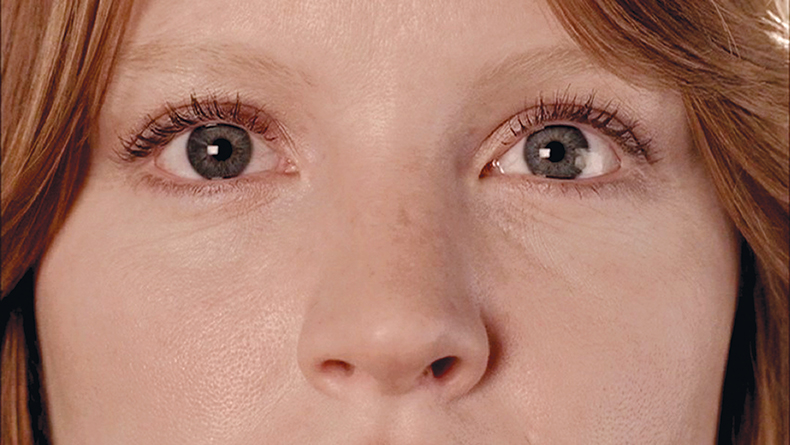
We shot Claire’s close-up on the soundstage; she was in the car with a green screen behind her. I’m pretty sure those reflections in her eyes we put in later in post. She turns to roll down the window, wind in her hair, then we cut to the helicopter shot outside the car seeing the window open, so we kind of married the exterior shot to the close-up in the car. I’ve never been a fan of self-conscious shots that draw attention to themselves because for me as an audience member it always takes me out of the story. I want the shots to illuminate what the characters are feeling.
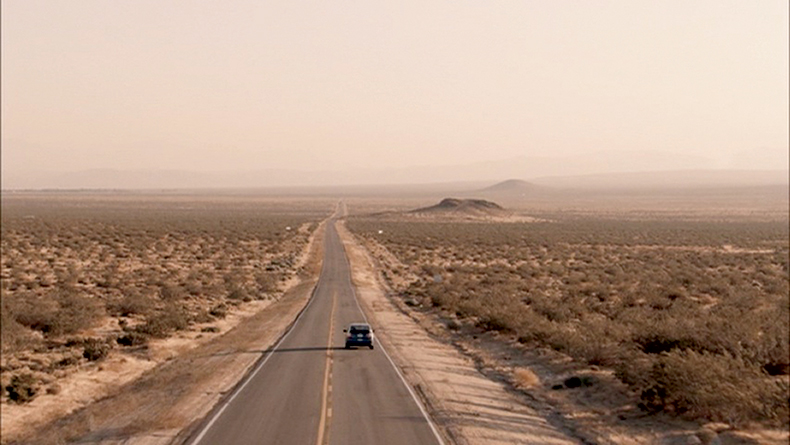
This is what I wanted the final shot to be. It starts with Claire driving the car, the helicopter [is shooting] low and beside her. The car continues on as we come behind her and rise up. I
wanted to make sure that we knew Lauren was in that car and that it wasn’t a stunt driver. We only had to do that shot twice;
I thought it was going to take us a lot longer. I wanted to continue that drifting-up motif while at the same time be in a flat, empty landscape, because I feel like at this point Claire’s life is pretty much a blank canvas and it’s up to her to turn it into what she wants. I wanted the landscape to be stark and empty like that. I was really happy with the way it came out.